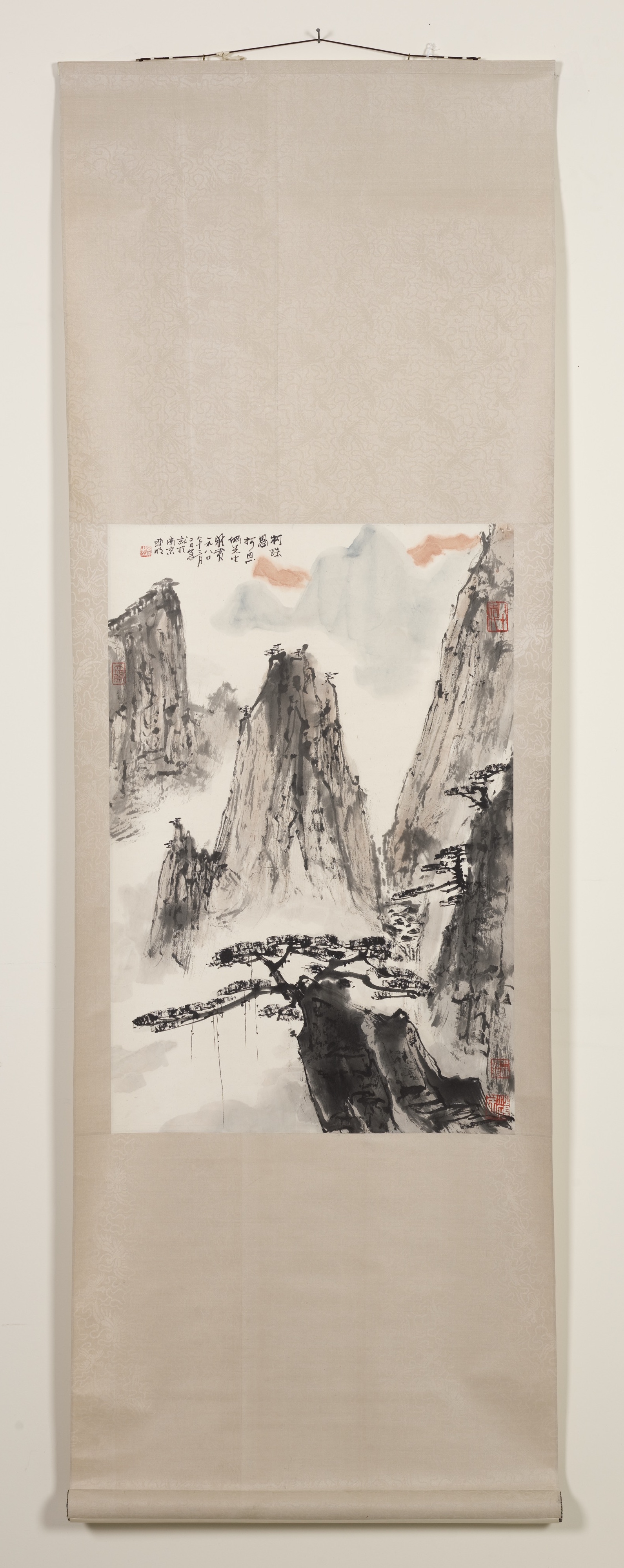In Ya Ming’s 1980 painting, cliffs rise from churning clouds, pine trees perch on the peak, and a sunrise settles over a sky dotted by distant mountaintops. When paired together, Mount Huang and Wang Wei’s poem invite audiences to quietly enter nature without disturbing the tranquility of the landscape. The poem’s narrator speaks from a mist-shrouded summit “where nobody ever comes,” suggesting a separation from society similar to Ya Ming’s painting. Infused with a lasting sense of seclusion, the two mountain landscapes unify as one through their shared solitude.
Despite centuries of separation between this Tang-dynasty (618–907) poem and the contemporary painting, the sun permeates both works—“low rays” breach Wang Wei’s “dark forest,” while reflections of the sun shower Ya Ming’s cliff sides with warm light. This sunrise mirrors the regeneration of Ya Ming’s own career as head of the Nanjing Art Academy; his interest in traditional landscape painting, a genre deemed feudal during the Cultural Revolution (1966–1976), led to his initial dismissal. The red-tinted cliffs in his work thus imply a rising sun, a restoration of artistic autonomy after his reinstatement.
Poem selection and label by Erin Sulla ’19
